Affiliate links on Android Authority may earn us a commission. Learn more.
History of the Qualcomm Snapdragon 800 series: World-class Android processors
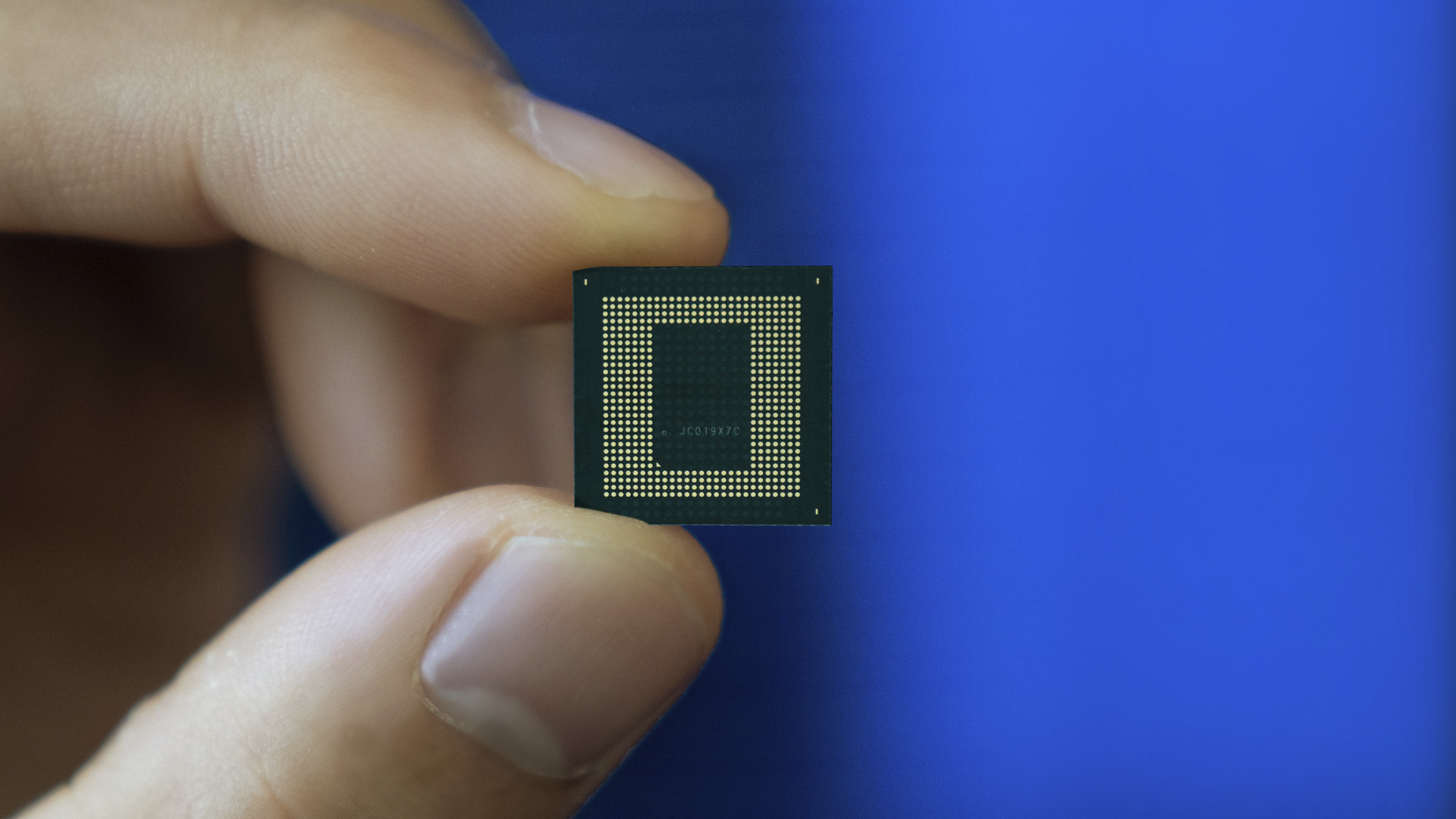
Qualcomm has been a fixture in the smartphone industry since the late 2000s by providing Snapdragon processors and modems to the biggest players in the space. It’s the firm’s flagship silicon — the Snapdragon 800 series — that gets the most attention these days, and for good reason.
The US designer’s high-end chips have earned a reputation for being the top Android phone processors for a couple of years now — bringing a powerful CPU, class-leading graphics, and the latest connectivity.
We’ve charted the Qualcomm Snapdragon history for its flagship SoC series. Join us as we go from the beginning all the way to the current pinnacle of Qualcomm silicon.
See also: What is an SoC? Everything you need to know about smartphone chipsets
Before the Snapdragon 800 series: Sx and 600
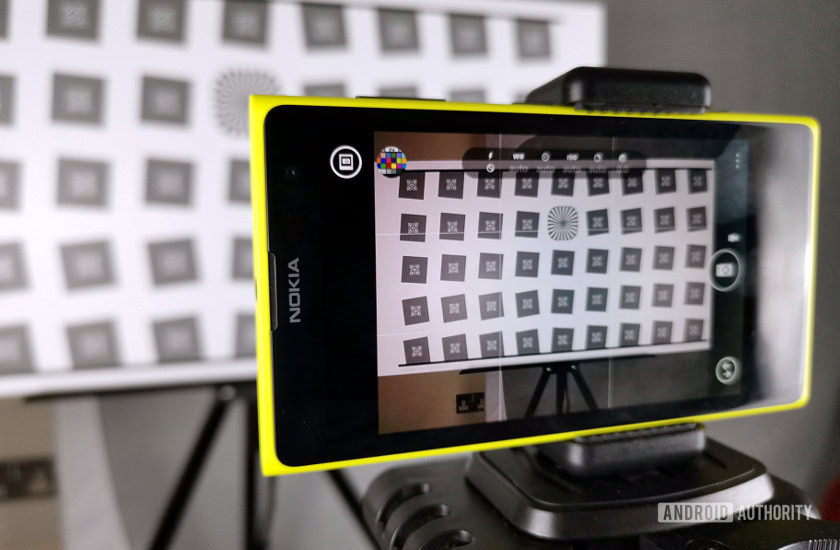
The Snapdragon 800 series sits atop the pile today, but the series didn’t adopt the 800 moniker until early 2014.
Instead, Qualcomm’s first flagship processors for the modern smartphone era were members of the Snapdragon Sx series, ranging from the Snapdragon S1 to the S4 Plus range. These chip families spanned from the late 2000s to 2013 and varied wildly in terms of capabilities.
The early Snapdragon S family chipsets were notable at the time thanks to their 1GHz clock speeds — albeit with single-core CPU designs. The series then followed the general industry trend of going from single-core to dual-core CPUs. We also saw Qualcomm hopping from a custom Scorpion CPU core to its Krait 200 cores.
One constant — for the most part — was the use of Adreno GPUs, which were borne out of Qualcomm’s acquisition of AMD’s mobile division. We say “for the most part” because the first Snapdragon S1 chipset (MSM7225) lacked a GPU, and forced the single-core CPU to do all the heavy lifting. Could you imagine a modern smartphone processor lacking dedicated graphics hardware?
Otherwise, we also got Bluetooth 2 to 4.0 capabilities, LPDDR to LPDDR2 RAM support, and 65nm to 45nm designs.
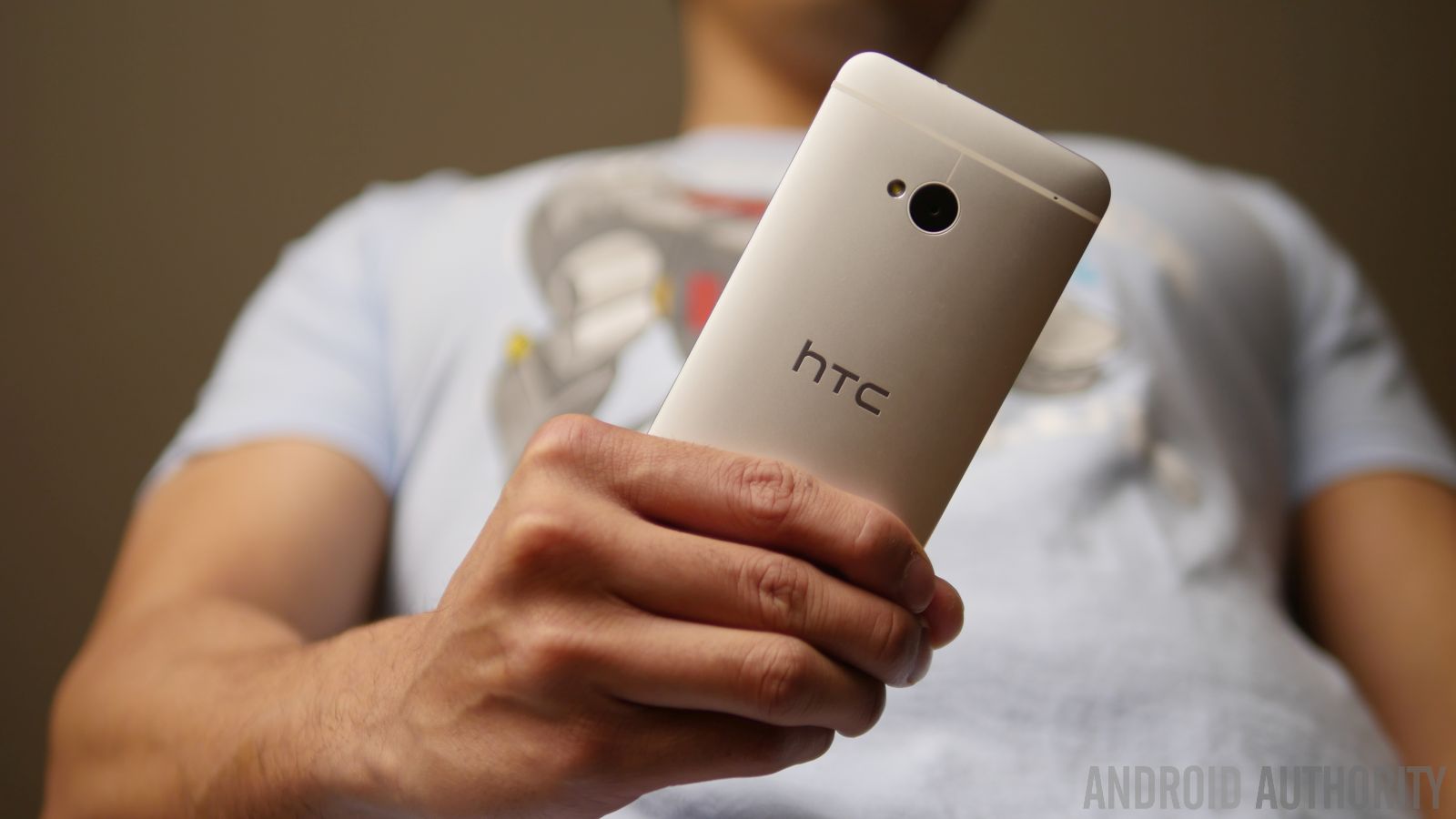
While there was some overlap, Qualcomm began to move away from the S series in early 2013 following the launch of the 28nm Snapdragon 600 chipset. This was adopted as the high-end chipset of choice by most Android OEMs at the time. It’s easy to see why too. It offered a powerful quad-core CPU design — featuring Krait 300 cores — while also supporting 1080p screens.
Snapdragon 600 series silicon powered classic phones like the Samsung Galaxy S4 and HTCOne M7.
The Snapdragon 600 also came at a time when multi-core processors were gaining traction fast with the likes of Samsung and MediaTek going so far as to offer octa-core designs. However, Qualcomm showed that quality is more important than quantity when it comes to CPU cores.
Other notable specs seen on the Snapdragon 600 include LPDDR3 RAM support, a camera up to 21MP, 1080p video recording, a 28nm design, 2.4Ghz/5Ghz Wi-Fi, Bluetooth 4, and Quick Charge 1.0.
Notable Snapdragon Sx phones: BlackBerry Z10, HTC Sensation 4G, Nokia Lumia 1020, Sony Ericsson Xperia X10, Sony Ericsson Xperia Play, Samsung Galaxy S Plus.
Notable Snapdragon 600 series phones: HTC One M7, LG Optimus G Pro, OPPO N1, Samsung Galaxy S4.
Did you know: The Snapdragon S4 Pro, which was one of the last chips in the Sx series, is essentially a Snapdragon 600 Lite (featuring tweaked CPU cores, for one). This particular processor made its way into phones like the LG Nexus 4, LG Optimus G, and Sony Xperia Z.
Snapdragon 800, 801, 805: Laying the foundation
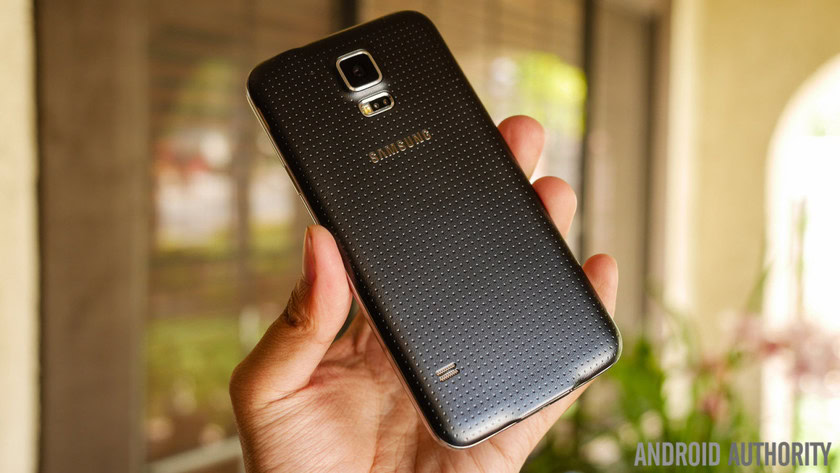
Qualcomm followed up the Snapdragon 600 with the first Snapdragon 800 processors in its history. We got the Snapdragon 800 chipset in early 2013 and the Snapdragon 801 in early 2014. The 28nm Snapdragon 800 and 801 made for a big jump over the Snapdragon 600, while the 600 series naming convention was used for the mid-range segment from here on out.
The Snapdragon 801 is an incremental upgrade over the Snapdragon 800, featuring slightly faster CPU and GPU clock speeds and improved endurance. Otherwise, they’re both 32-bit chips with quad-core Krait 400 CPU designs and Adreno 330 graphics. Qualcomm’s first Snapdragon 800 processors also offered support for Quick Charge 2.0, LPDDR3 RAM, Bluetooth 4.0, and 2K screens.
This generation marked the first Snapdragon flagship processors to offer 4K video recording with the likes of the Galaxy S5 and Sony Xperia Z2 all offering UHD recording as a result. Performance and/or storage requirements often meant that these early phones were restricted to a few minutes of 4K recording at best.
| Snapdragon 800/801 | Snapdragon 805 | |
|---|---|---|
CPU | Snapdragon 800/801 4x Krait 400 CPU (2.3Ghz for 800, 2.5Ghz for 801) | Snapdragon 805 4x Krait 450 CPU (2.7Ghz) |
GPU | Snapdragon 800/801 Adreno 330 | Snapdragon 805 Adreno 420 |
Camera | Snapdragon 800/801 21MP single 4K/30fps video recording | Snapdragon 805 55MP single 4K/30fps video recording |
Modem | Snapdragon 800/801 150Mbps downlink 50Mbps uplink | Snapdragon 805 300Mbps downlink 50Mbps uplink |
Bluetooth | Snapdragon 800/801 4.0 | Snapdragon 805 4.1 |
Quick Charge | Snapdragon 800/801 2.0 | Snapdragon 805 2.0 |
Manufacturing process | Snapdragon 800/801 28nm | Snapdragon 805 28nm |
Qualcomm would follow up with the Snapdragon 805 in late 2014, landing in the Motorola Nexus 6, and Samsung Galaxy Note 4 range. It would prove to be the last major 32-bit flagship processor from the company, and what a swansong it was on paper.
The Snapdragon 805 differed from the previous Snapdragon 800 series SoCs by offering tweaked CPUs with higher clock speeds, an all-new Adreno 420 GPU, 4K display support, 300Mbps LTE downlink speeds, UFS support, Bluetooth 4.1, and support for 55MP cameras.
Notable phones: HTC One M8, LG G3, LG G Flex, OnePlus One, Samsung Galaxy S5, Samsung Galaxy Note 4, Sony Xperia Z2.
Did you know: The Snapdragon 600 and 800 chipsets actually got announced at the same time with the Snapdragon 600 appearing in devices in the first half of the year. Meanwhile, the 800 chipset landed in devices in the second half of 2013.
Snapdragon 808 and 810: Enter the 64-bit era
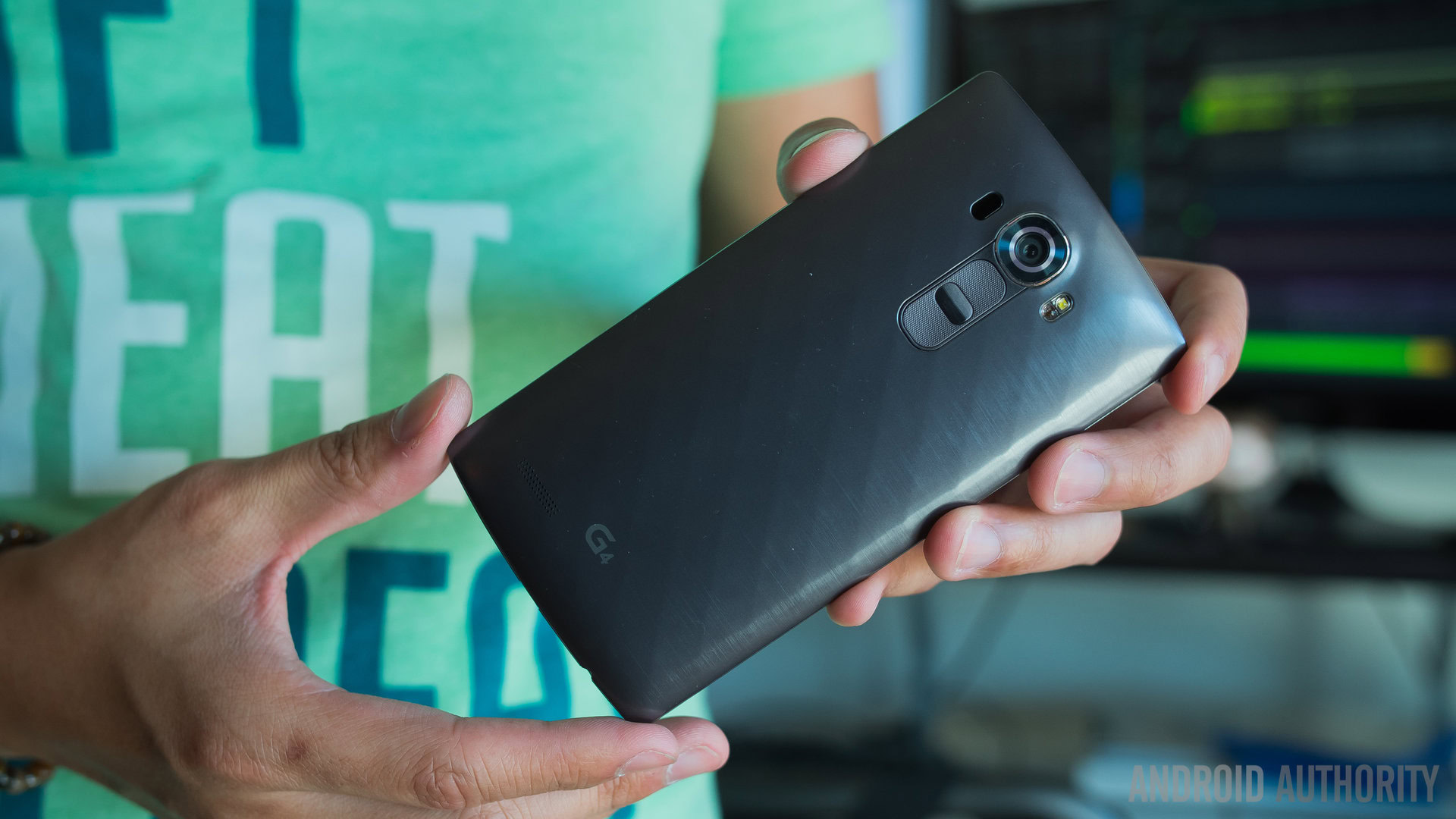
Apple caught the Android world napping when it launched the iPhone 5s in late 2013 featuring the first 64-bit smartphone chipset. Qualcomm didn’t have a response ready for 2014, but served up its first 64-bit flagship processors in 2015 with the 20nm Snapdragon 808 and 810.
The Snapdragon 810 was the more powerful chipset on paper, delivering an octa-core design for the first time in its flagship tier (4x Cortex-A57 and 4x Cortex-A53) and Adreno 430 graphics. Meanwhile, the Snapdragon 808 offered a hexa-core CPU (2x Cortex-A57 and 4x Cortex-A53) and slightly less capable Adreno 418 graphics.
| Snapdragon 808 | Snapdragon 810 | |
|---|---|---|
CPU | Snapdragon 808 2x Cortex-A57 4x Cortex-A55 | Snapdragon 810 4x Cortex-A57 4x Cortex-A55 |
GPU | Snapdragon 808 Adreno 418 | Snapdragon 810 Adreno 430 |
Camera | Snapdragon 808 21MP single | Snapdragon 810 55MP single |
Modem | Snapdragon 808 450Mbps downlink 50Mbps uplink | Snapdragon 810 450Mbps downlink 50Mbps uplink |
Bluetooth | Snapdragon 808 4.1 | Snapdragon 810 4.1 |
Quick Charge | Snapdragon 808 2.0 | Snapdragon 810 2.0 |
Manufacturing process | Snapdragon 808 20nm | Snapdragon 810 20nm |
The Snapdragon 810 shared plenty in common with the Snapdragon 800/801, such as Quick Charge 2.0, 4K display support, UFS storage, Bluetooth 4.1, and 55MP camera capabilities. As for the Snapdragon 808, it had a lot in common with its stablemates too, but lacked 4K display support and 55MP output.
It’s widely believed that the Snapdragon 810 ran a little too hot for some brands. There were reports that phones released early in the year all suffered from thermal-related issues at first. The firm released a Snapdragon 810 V2.1 chipset in the second half of 2015 with the claim that it ran “cooler than ever.” This tweaked SoC appeared in the likes of the OnePlus 2 and Xiaomi Mi Note Pro.
Notable phones: HTC One M9, HUAWEI Nexus 6P, LG G4, LG G Flex 2, LG V10, OnePlus 2.
Did you know: 2015 was the last time that Samsung’s flagships were powered entirely by an Exynos processor, ostensibly due to the Snapdragon 810’s thermal challenges.
Snapdragon 820: Back to basics
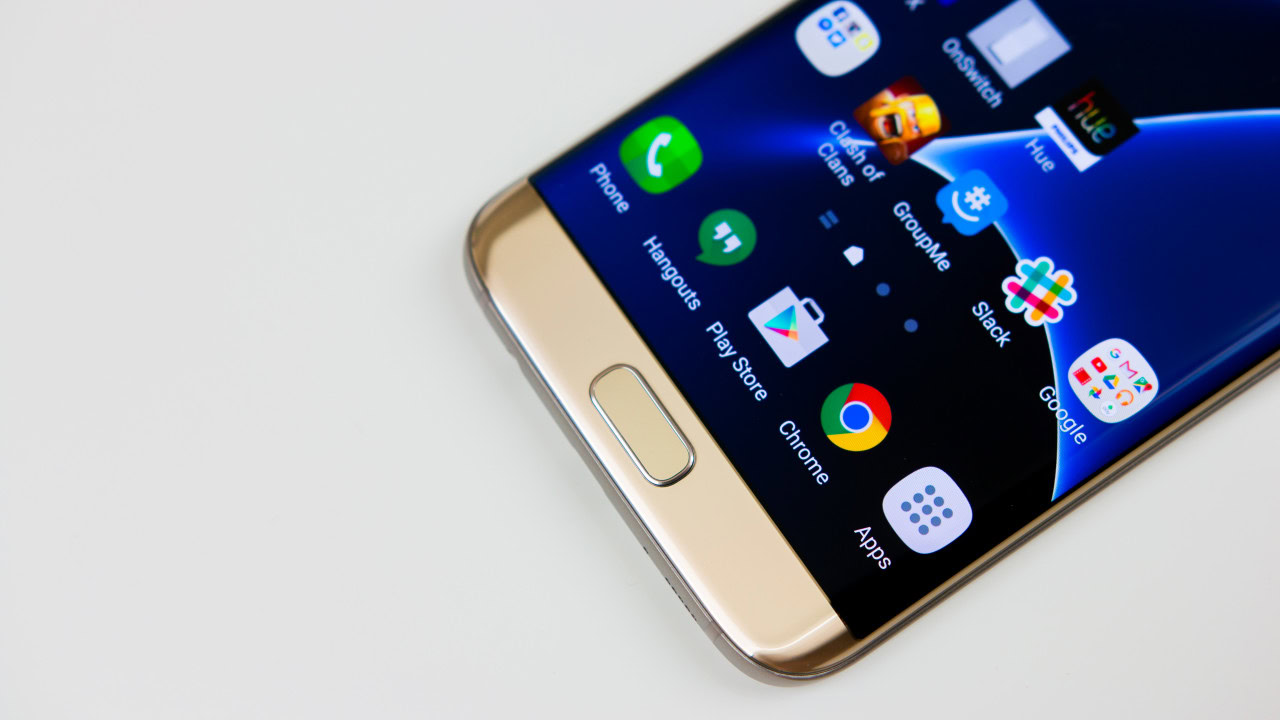
Qualcomm’s reputation took quite a beating in 2015 due to the Snapdragon 810, but 2016 showed that the firm could still deliver powerful, well-rounded processors. The Snapdragon 820 saw the firm revert to fully custom CPUs and a quad-core design, using the Kryo name for the first time.
Related: How to understand Kryo CPU numbering in Qualcomm Snapdragon processors
The switch to fewer CPU cores didn’t seem to harm the Snapdragon 820 either — at least for single-core tasks. The Adreno 530 GPU brought a stated boost of up to 40% over the Snapdragon 810’s GPU. The new flagship silicon also served up the Vulkan graphics API, which delivers improved performance in games and apps that support it.
Qualcomm launched the Snapdragon 821 in the second half of 2016, delivering slightly better CPU and GPU performance as well as slightly better power consumption. Other than that, the two chipsets were identical. The two SoCs also served up Quick Charge 3, support for LPDDR4 RAM, Bluetooth 4.1, Cat 12 LTE (600Mbps down), and 28MP single cameras.
| Snapdragon 820 | Snapdragon 821 | |
|---|---|---|
CPU | Snapdragon 820 2x Qualcomm Kryo (2.2Ghz) 2x Qualcomm Kryo (1.6Ghz) | Snapdragon 821 2x Qualcomm Kryo (2.4Ghz) 2x Qualcomm Kryo (2Ghz) |
GPU | Snapdragon 820 Adreno 530 | Snapdragon 821 Adreno 530 |
Camera | Snapdragon 820 28MP single | Snapdragon 821 28MP single |
Modem | Snapdragon 820 600Mbps downlink 150Mbps uplink | Snapdragon 821 600Mbps downlink 150Mbps uplink |
Bluetooth | Snapdragon 820 4.1 | Snapdragon 821 4.1 |
Quick Charge | Snapdragon 820 3.0 | Snapdragon 821 3.0 |
Manufacturing process | Snapdragon 820 14nm LPP | Snapdragon 821 14nm LPP |
It’s also worth noting that the Snapdragon 820 and 821 formed part of Qualcomm’s major push into heterogeneous computing via the Hexagon 680 digital signal processor (DSP). That is, Qualcomm offloaded tasks from the CPU and GPU to the DSP — and eventually other bits of silicon — in the name of speed or power efficiency.
Tasks that can be offloaded to the DSP include computer vision, fitness tracking, and some image processing. This is one of the more important trends in the history of Qualcomm Snapdragon processors because it shows that a CPU, GPU, and modem aren’t enough to compete in this space. It would only rise in importance in the following years.
Notable phones: Google Pixel series, HTC 10, LG G5, LG G6, LG V20, Samsung Galaxy S7 series, Xiaomi Mi 5.
Did you know: The Snapdragon 820 and 821 remain the last flagship Snapdragon phone processors to use fully custom CPU cores. Samsung would launch its first custom CPU in 2016 — seen in the Exynos 8890 — but it killed off the division responsible for this project in late 2019.
Snapdragon 835: A blueprint for the future
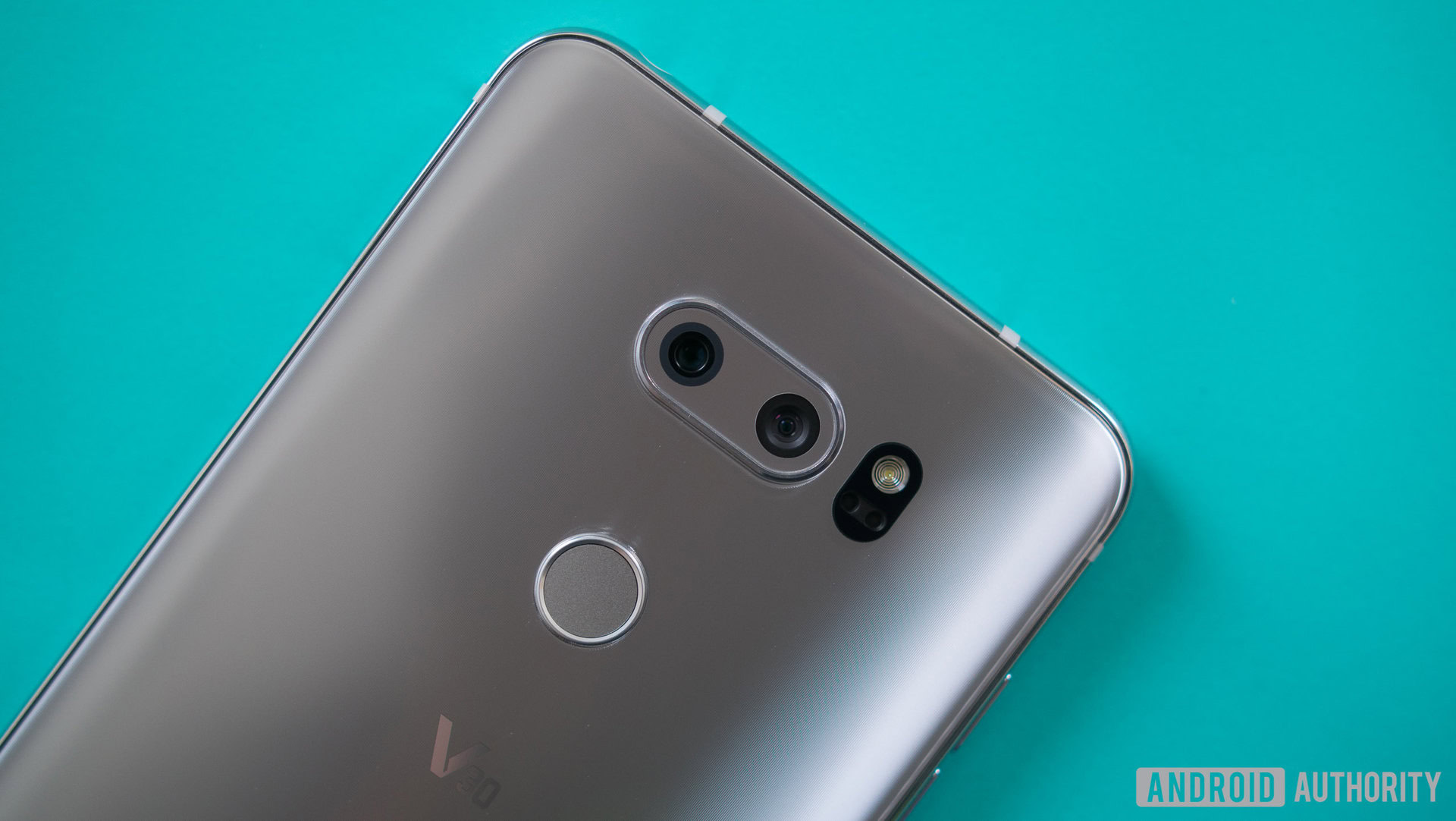
The Snapdragon 835 in 2017 was a notable release for the company as it established a couple of traditions that the firm still maintains to this day. For starters, Qualcomm ditched its custom CPU strategy entirely in favor of using semi-custom Arm CPU designs (4x Cortex-A73 and 4x Cortex-A53). Another tradition established with the Snapdragon 835 was the switch to octa-core CPU designs instead of quad-core as seen on the Snapdragon 820 and 821.
Qualcomm also took heed of the dual camera trend established in 2016 by explicitly offering dual-camera support for the first time in the tier — namely 16MP plus 16MP or 32MP single. Other notable multimedia features include better zoom capabilities, HDR video recording, and HEVC support.
| Snapdragon 835 | |
|---|---|
CPU | 4x semi-custom Cortex-A73 4x semi-custom Cortex-A53 |
GPU | Adreno 540 |
Camera | 16MP dual 32MP single |
Modem | 1Gbps downlink 150Mbps uplink |
Bluetooth | 5.0 |
Quick Charge | 4.0 |
Process | 10nm FinFET |
Unlike the previous year, Qualcomm didn’t have a mid-year refresh — a Snapdragon 836 or 835 Plus, if you will. Qualcomm would buck this trend the following year too. Other noteworthy features include the Adreno 540 GPU, Bluetooth 5, Gigabit LTE, Quick Charge 4, and support for HDR screens.
This chipset also made its way into Windows laptops for the first time in the Qualcomm flagship series. Unfortunately, these first laptops and/or convertibles disappointed when it came to power and app compatibility — a challenge that Qualcomm, Microsoft, and partners continue to tackle today.
Notable phones: HTC U11 Plus, LG V30, OnePlus 5, OnePlus 5T, Samsung Galaxy S8 series, and Xiaomi Mi 6.
Did you know: One thing you won’t find on the Snapdragon 835 is 4K/60fps recording. The feature was missing from both Samsung Galaxy S8 variants even though the Exynos chipset powering the international variant supported the recording standard.
Snapdragon 845: Still powerful today
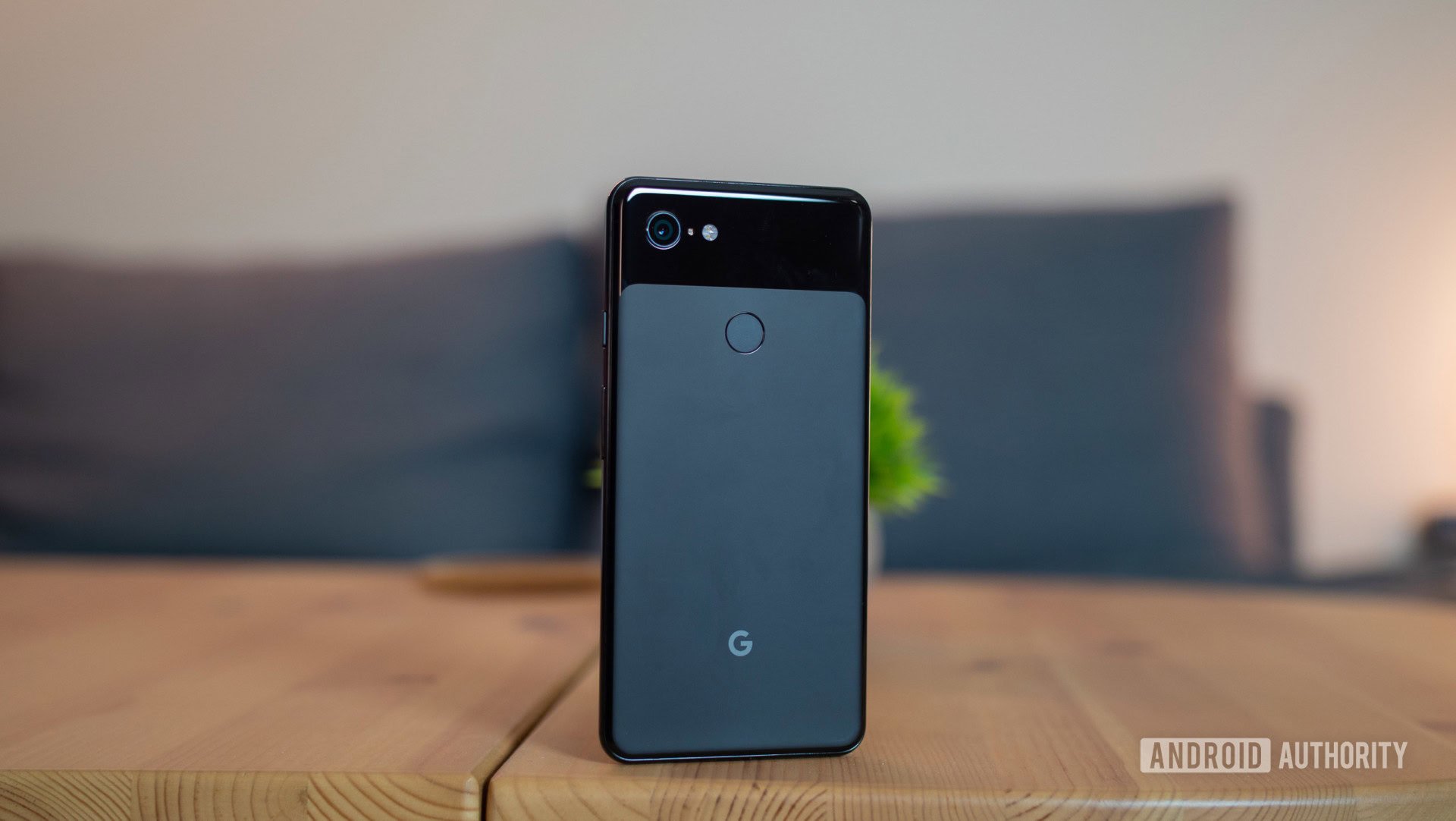
Qualcomm announced the Snapdragon 845 at the end of 2017, which powered a plethora of smartphones in 2018 and was considered one of the better Snapdragon processors in the firm’s history. It delivered Arm’s DynamIQ CPUs for the first time (4x Cortex-A75 and 4x Cortex-A55) for improved power and energy consumption as well as the Adreno 630 GPU. The latter promised a 30% graphical rendering boost over the previous year’s high-end chipset.
The Snapdragon 845 also launched in the wake of dedicated machine learning silicon becoming a feature, as HUAWEI’s Kirin 970 debuted a Neural Processing Unit (NPU) months before Qualcomm’s launch. The firm didn’t offer dedicated ML silicon of its own in the 845, but it served up an upgraded Hexagon DSP for on-device processing of voice, imaging, computer vision, and other tasks.
Read: Artificial intelligence versus machine learning — What’s the difference?
This processor initially offered the same camera support — 16MP plus 16MP dual, 32MP single — as the Snapdragon 835, but Qualcomm retroactively brought support for 48MP multi-frame shots and 192MP snapshots. Other noteworthy camera-related features included 4K/60fps recording, 4K HDR video recording, and multi-frame noise reduction.
| Snapdragon 845 | |
|---|---|
CPU | 4x semi-custom Cortex-A75 4x semi-custom Cortex-A55 |
GPU | Adreno 630 |
Camera | 16MP+16MP dual 48MP single 192MP snapshots |
Modem | 1.2Gbps downlink 150Mbps uplink |
Bluetooth | 5.0 |
Quick Charge | 4+ |
Manufacturing process | 10nm LPP |
The Snapdragon 845 also pushed AR/VR/XR in a big way by supporting features like six degrees of freedom and foveated rendering. Toss in features like Quick Charge 4 Plus, TrueWireless tech for improved wireless audio, and a secure processing unit (SPU) for security and you’ve got a full-featured package that isn’t too shabby today.
Notable phones: Google Pixel 3 series, HTC U12 Plus, OnePlus 6, OnePlus 6T, POCO F1, Xiaomi Mi 8.
Did you know: Qualcomm also released a tweaked version of the Snapdragon 845 for laptops, dubbed the Snapdragon 850. It features a higher clock speed and several other minor tweaks.
Snapdragon 855 and 855 Plus: A return to mid-year refreshes

The Snapdragon 855 changed the fundamentals in a big way in 2019, taking a page out of MediaTek and HUAWEI’s book by offering a three-tiered CPU layout. So, you’ve got one high-end CPU core when you need plenty of power, three CPU cores for mid-weight tasks, and four CPU cores for light activities.
Combine the new CPU layout with a 7nm design for the first time and you’ve got the recipe for a powerful chipset that’s efficient too. The Snapdragon 855 Plus — launched in mid-2019 — would bring a clock speed boost to the top-end CPU core and the Adreno 640 GPU. Otherwise, it’s identical to the vanilla 855.
This was the firm’s first 5G-enabled chipset, albeit via the addition of an external X50 or X55 modem. In any event, the SoCs offered impressive 4G support, topping out at 2Gbps.
This also marked the first time we saw Qualcomm offer dedicated machine learning hardware, as its Hexagon Tensor Accelerator is a bit of silicon that forms part of the Hexagon DSP. So, machine learning tasks like voice recognition, speech-to-text, and more should be faster and more power-efficient.
| Snapdragon 855 Plus | Snapdragon 855 | Snapdragon 860 | |
|---|---|---|---|
CPU | Snapdragon 855 Plus 1x Kryo 485 Gold (A76-based) @ 2.96GHz 3x Kryo 485 Gold (A76-based) @ 2.42GHz 4x Kryo 485 Silver (A55-based) @ 1.80GHz | Snapdragon 855 1x Kryo 485 Gold (A76-based) @ 2.84GHz 3x Kryo 485 Gold (A76-based) @ 2.42GHz 4x Kryo 485 Silver (A55-based) @ 1.80GHz | Snapdragon 860 1x Kryo 485 Gold (A76-based) @ 2.96GHz 3x Kryo 485 Gold (A76-based) @ 2.42GHz 4x Kryo 485 Silver (A55-based) @ 1.80GHz |
GPU | Snapdragon 855 Plus Adreno 640 @ 672MHz (estimated) | Snapdragon 855 Adreno 640 @ 585MHz | Snapdragon 860 Adreno 640 @ 672MHz (estimated) |
Camera | Snapdragon 855 Plus 22MP dual 48MP single 192MP snapshot | Snapdragon 855 22MP dual 48MP single 192MP snapshot | Snapdragon 860 22MP dual 48MP single 192MP snapshot |
RAM | Snapdragon 855 Plus 4x 16-bit channels @ 2133MHz LPDDR4x 34.1GB/s | Snapdragon 855 4x 16-bit channels @ 2133MHz LPDDR4x 34.1GB/s | Snapdragon 860 4x 16-bit channels @ 2133MHz LPDDR4x 34.1GB/s |
Modem | Snapdragon 855 Plus Snapdragon X24 LTE 2000Mbps download 316Mbps upload | Snapdragon 855 Snapdragon X24 LTE 2000Mbps download 316Mbps upload | Snapdragon 860 Snapdragon X24 LTE 2000Mbps download 316Mbps upload |
Bluetooth | Snapdragon 855 Plus 5.1 | Snapdragon 855 5.1 | Snapdragon 860 5.1 |
Quick Charge | Snapdragon 855 Plus 4+ | Snapdragon 855 4+ | Snapdragon 860 4+ |
Manufacturing process | Snapdragon 855 Plus 7nm FinFET | Snapdragon 855 7nm FinFET | Snapdragon 860 7nm FinFET |
Qualcomm also concentrated on multimedia in a big way with the 855 series, starting with camera support. The firm debuted a so-called computer vision ISP (CV-ISP) for more advanced photography and videography, enabling HDR10 Plus video capture, 4K HDR video capture with portrait mode, 480fps slow-motion video, and HEIF/HEVC capture. Otherwise, the SoC sports the ability to capture 192MP snapshots, 48MP images with multi-frame processing, and 22MP dual camera capabilities.
Gaming was another big focus area for the firm with this generation of chipsets, which saw the company introduce the Snapdragon Elite Gaming suite of features for the first time. More specifically, the suite reduced jank/judder and offered anti-cheat extensions.
Another notable addition in this generation was the FastConnect suite, as Qualcomm decided to brand its wireless connectivity feature-set. The FastConnect 6200 platform includes Bluetooth 5.1 and Wi-Fi 6.
Other key features include Quick Charge 4 Plus, a voice assistant accelerator, aptX Adaptive audio for more resilient wireless audio, and ultrasonic fingerprint support.
Qualcomm also launched the Snapdragon 860 in 2021, debuting in the POCO X3 Pro. This is effectively a Snapdragon 855 Plus with a couple of very minor changes. The changes include the ability to address more RAM (from 12GB to 16GB) and support for a higher refresh rate when using two external displays (90Hz versus 60Hz). Either way, the Snapdragon 860 is aimed at the mid-range in 2021, giving more graphical power and more impressive multimedia capabilities than typical mid-range chipsets.
Notable phones: ASUS ROG Phone 2, ASUS Zenfone 6, LG G8, OnePlus 7/7T series, Samsung Galaxy S10 series, Xiaomi Mi 9T Pro/Redmi K20 Pro.
Did you know: Much like the Snapdragon 835 and Exynos 8895, Samsung’s Exynos 9820 had a video feature that the Snapdragon 855 lacked in 8K video recording. Unfortunately, as we saw with the Galaxy S8 series, the Exynos version of the Galaxy S10 series still didn’t offer 8K.
Snapdragon 865 series: The high cost of 5G
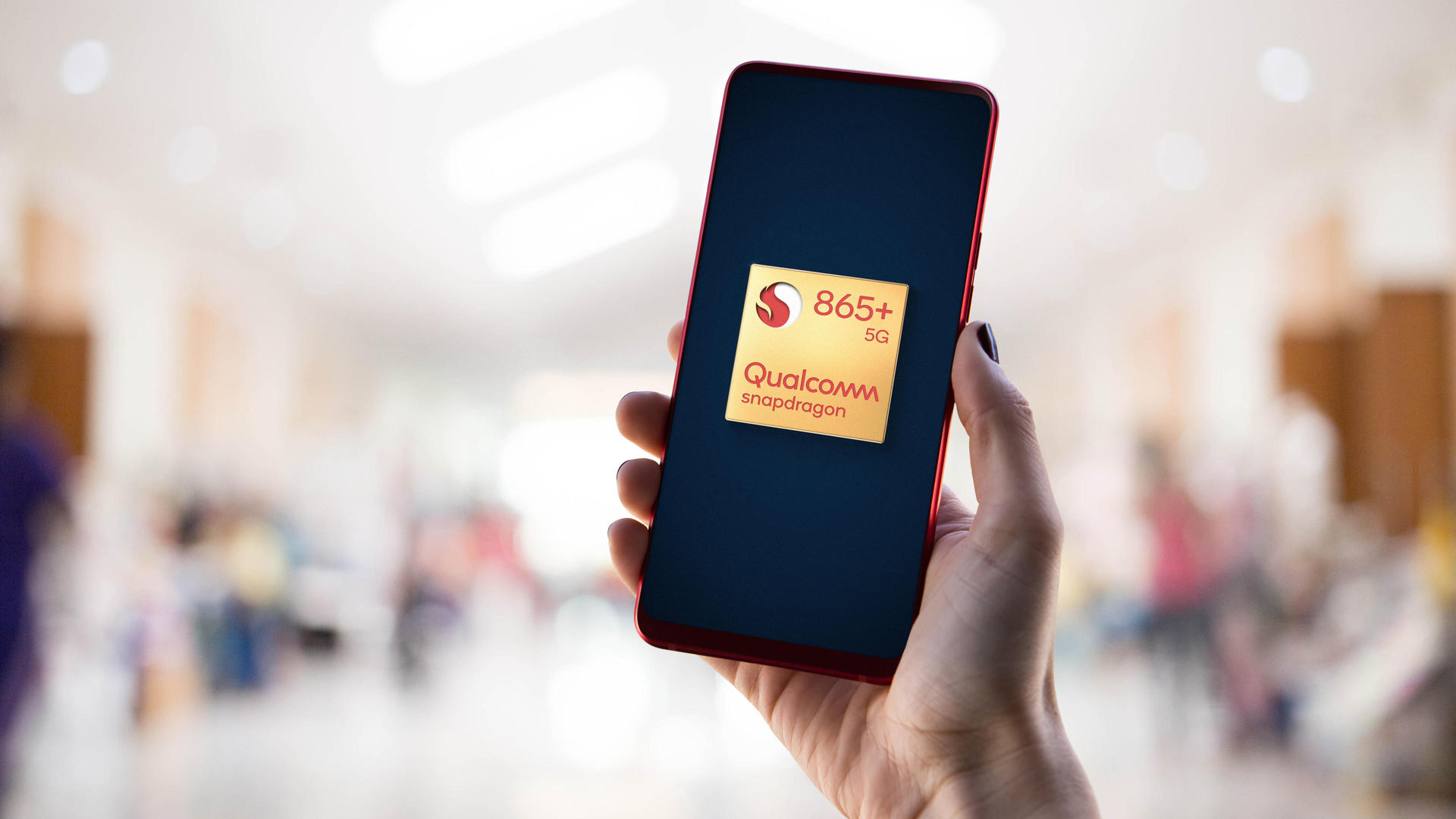
2020’s Snapdragon flagship processor was a somewhat controversial entry in Qualcomm’s stable upon its release. This time there was no doubting that the Snapdragon 865 was a world-class performer packed to the gills with features while also being the fastest Android phone processor around.
Unfortunately, the biggest reported problem is the price. Several sources point to a steep price increase from the Snapdragon 855 series to the Snapdragon 865. For the most part, this has resulted in manufacturers needing to pass this cost to consumers as well, with even the likes of OnePlus and Xiaomi offering drastic price leaps.
Qualcomm bundled a separate 5G modem (X55) with every Snapdragon 865 SoC, which means that even Snapdragon 865 phones in markets without 5G have the high-speed modem inside them. On the one hand, this means the device is ready for 5G when it comes to your market — provided it has other 5G components too. On the other hand, you’re paying a premium for mandatory 5G components even if you’re happy with 4G.
In any event, the Snapdragon 865 offers a similar triple power domain CPU arrangement as the 855 series. So, that means four Cortex-A77 cores — one prime core and three medium cores — and four Cortex-A55 cores for efficiency. We’ve also got the Adreno 650 GPU, which continues the trend of being a top-notch performer for advanced gaming.
| Snapdragon 865 Plus | Snapdragon 865 | Snapdragon 870 | |
|---|---|---|---|
CPU | Snapdragon 865 Plus 1x 3.1GHz Kryo 585 (Cortex A77) 3x 2.4GHz Kryo 585 (Cortex A77) 4x 1.8GHz Kryo 585 (Cortex-A55) | Snapdragon 865 1x 2.84GHz Kryo 585 (Cortex A77) 3x 2.4GHz Kryo 585 (Cortex A77) 4x 1.8GHz Kryo 585 (Cortex-A55) | Snapdragon 870 1x 3.2GHz Kryo 585 (Cortex A77) 3x 2.4GHz Kryo 585 (Cortex A77) 4x 1.8GHz Kryo 585 (Cortex-A55) |
GPU | Snapdragon 865 Plus Adreno 650 | Snapdragon 865 Adreno 650 | Snapdragon 870 Adreno 650 |
Modem | Snapdragon 865 Plus X55 5G & RF system 7500 Mbps down 3000 Mbps up | Snapdragon 865 X55 5G & RF system 7500 Mbps down 3000 Mbps up | Snapdragon 870 X55 5G & RF system 7500 Mbps down 3000 Mbps up |
Cameras | Snapdragon 865 Plus 200MP single / 64MP single with Zero Shutter Lag 24MP dual camera Hybrid AF, HDR video, multi-frame noise reduction | Snapdragon 865 200MP single / 64MP single with Zero Shutter Lag 24MP dual camera Hybrid AF, HDR video, multi-frame noise reduction | Snapdragon 870 200MP single / 64MP single with Zero Shutter Lag 24MP dual camera Hybrid AF, HDR video, multi-frame noise reduction |
Quick Charge | Snapdragon 865 Plus 4+ | Snapdragon 865 4+ | Snapdragon 870 4+ |
Bluetooth | Snapdragon 865 Plus 5.2 | Snapdragon 865 5.1 | Snapdragon 870 5.2 |
Process | Snapdragon 865 Plus 7nm FinFET | Snapdragon 865 7nm FinFET | Snapdragon 870 7nm FinFET |
Meanwhile, the Snapdragon 865 Plus arrived in July and cranked the prime core to 3.1Ghz, passing the 3Ghz barrier for the first time in the series. It also offered 10% faster graphics performance compared to the standard chipset. Another notable difference is that the Plus variant sports Wi-Fi 6E and Bluetooth 5.2 connectivity instead of Wi-Fi 6 and Bluetooth 5.1. Otherwise, the two chips are essentially identical.
Both chipsets still have some of the most impressive camera features in a smartphone processor to date. Qualcomm’s 2020 flagship SoCs support 200MP snapshots, 64MP shots with multi-frame processing, and 25MP plus 25MP dual camera support. The crazy camera specs don’t end there. The silicon is also capable of essentially unlimited 960fps video, 8K video recording, and simultaneous 4K HDR video/64MP photo capture. Unfortunately, we didn’t see any manufacturers use the former feature.
Other noteworthy features include aptX Voice for voice calls over Bluetooth, mmWave and sub-6Ghz 5G, Quick Charge 4 Plus, an AI engine that delivers twice the performance of its predecessor, and support for a 144Hz refresh rate.
Qualcomm also launched the Snapdragon 870 chipset in early 2021, and it’s essentially a mildly upgraded Snapdragon 865 Plus. The only real upgrade is a clock speed boost for the prime core (up to 3.2Ghz), with the rest of the spec sheet being identical to the 865 series. It looks like the chipset is being positioned as the silicon of choice for upper-mid range phones and affordable flagships in 2021.
Notable phones: ASUS ROG Phone 3, LG V60, OnePlus 8 series, OPPO Find X2 Pro, Samsung Galaxy S20 series (US), Xiaomi Mi 10 series, POCO F3.
Did you know: The Snapdragon 865 series is the first flagship silicon to offer GPU driver updates via app stores, sidestepping the traditional OTA update process. OPPO’s Find X2 series and Xiaomi’s Mi 10 range were among the first to offer this capability.
Snapdragon 888 range: 5G is the new normal
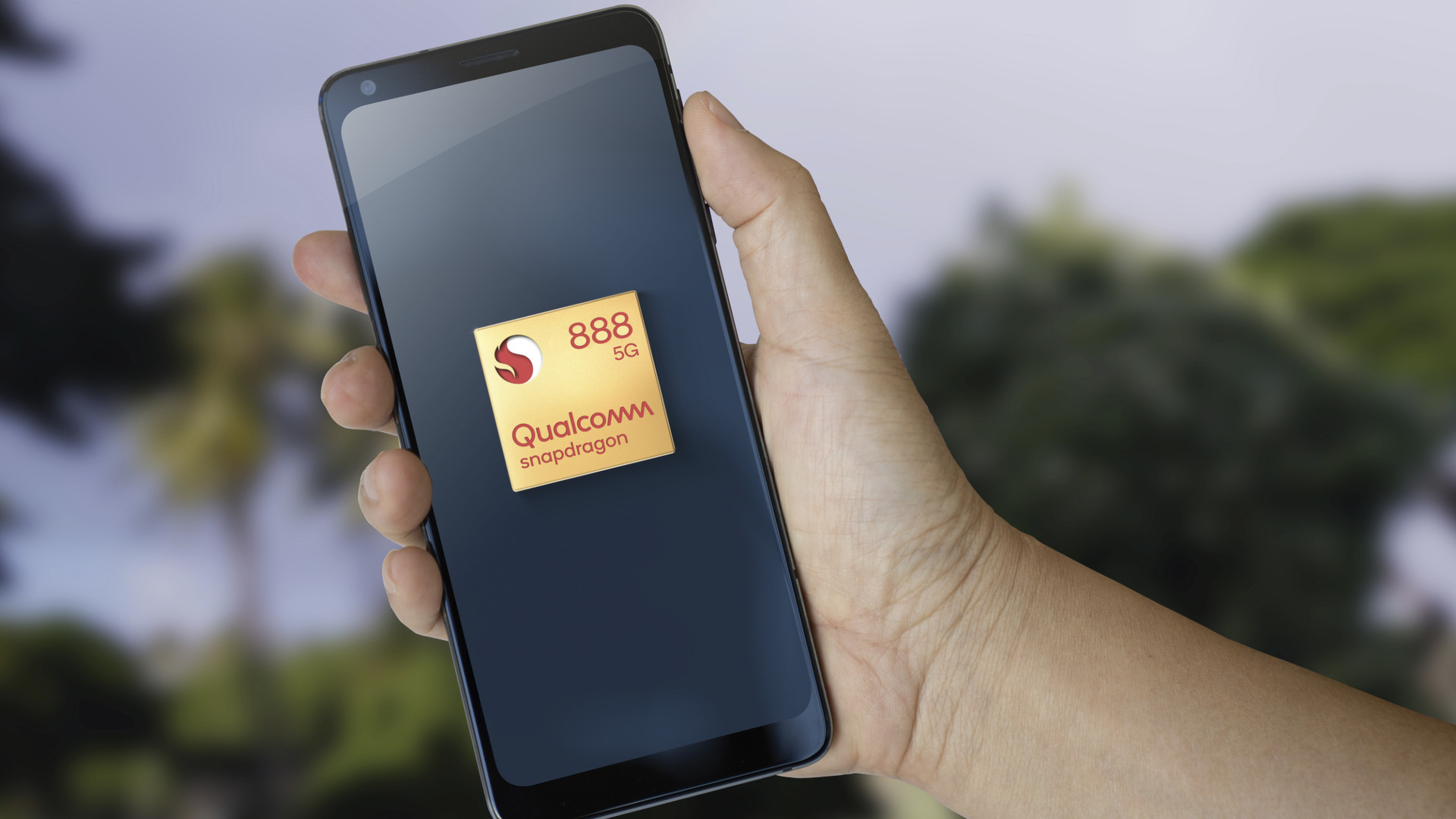
2021’s mainline Snapdragon 800 series processor was the Snapdragon 888, and it represented a major leap forward for Qualcomm’s flagship SoC line. For starters, it’s the first Qualcomm smartphone chipset to adopt a 5nm manufacturing process, which should deliver a smaller, more efficient design.
One of the biggest upgrades is the shift from an external 5G modem seen in 2020’s Snapdragon 865 series to an integrated X60 modem. An integrated modem generally results in better power efficiency, so expect 5G connectivity to be less battery-hungry on Snapdragon 888 phones. You’ll still be getting top-notch connectivity though, with speeds of up to 7.5Gbps, mmWave capabilities, and sub-6Ghz support.
Another notable upgrade is the CPU, which still maintains an octa-core three-tier arrangement. However, the Snapdragon 888 sees Qualcomm adopting Arm’s powerful Cortex-X1 CPU core for the first time, being used as the sole prime core. The X1 was designed to prioritize power over efficiency, with the aim of closing the gap to Apple, so expect plenty of grunt from it. Otherwise, you’re also getting three Cortex-A78 CPU cores, while four Cortex-A55 cores round out the CPU setup.
| Snapdragon 888 | |
|---|---|
CPU | 1x 2.84GHz Kryo 680 (Cortex-X1) 3x 2.4GHz Kryo 680 (Cortex-A78) 4x 1.8GHz Kryo 680 (Cortex-A55) |
GPU | Adreno 660 |
Modem | X60 5G & RF system 7500 Mbps down 3000 Mbps up (integrated) |
Cameras | 200MP single snapshot / 84MP single with Zero Shutter Lag / 28MP triple / 64MP dual |
Quick Charge | 5 |
Bluetooth | 5.2 |
Process | 5nm |
The GPU is another area where Qualcomm has flexed its design muscle, with the Adreno 660 apparently delivering a 35% graphics boost over 2020’s silicon. That’s a pretty big number and should enable a smoother experience with heavyweight 3D games and high refresh rate screens. Speaking of refresh rates, you’re still looking at the same 144Hz at QHD+ support as the previous flagship silicon.
Qualcomm delivered a major photography and videography boost with the previous year’s silicon, but the Snapdragon 888 steps things up here too. The SoC is capable of simultaneously capturing three 4K HDR streams or three 28MP shots. Other notable camera-related features include up to 84MP single camera shots (or 200MP snapshots without additional processing), 12MP photo capture at 120fps, 4K HDR with “computational” capture, 8K/30fps recording, and improved low-light capture.
More reading: Snapdragon 888 vs Kirin 9000 vs Exynos 2100 vs Apple A14
Another neat addition is Quick Charge 5 support, which will allow phone manufacturers to quickly implement 100W+ charging speeds. In fact, Qualcomm is touting the ability to charge a 4,500mAh battery from zero to 100% in under 15 minutes.
Other standout features include variable-rate shading for graphics, a 73% increase to AI computing power on paper, Wi-Fi 6E support, Bluetooth 5.2 (with Bluetooth LE Audio), and Truepic support for authenticating photos/videos.
Qualcomm also launched the Snapdragon 888 Plus in 2021, bringing two minor upgrades to the table. These included a higher Cortex-X1 clock speed (from 2.84GHz to 2.995GHz) and improved machine learning performance (~20%).
There are a couple of features missing from the Snapdragon 888 series though, such as 5G+5G dual SIM and AV1 decode support. Nevertheless, these chips still make a very strong argument for being the best Android flagship processor line on the market.
Notable phones: Samsung Galaxy S21 series, Xiaomi Mi 11, vivo X60 Pro Plus, ASUS Zenfone 8 series, OPPO Find X3 Pro.
Did you know: Qualcomm claims that the Snapdragon 888 name was the “most premium” name it could think of (given that the Snapdragon 800 series is the name of its premium chips). But it’s widely believed that the firm chose the name because eight is a lucky number in China.
Snapdragon 8 Gen 1 series: New name, same family
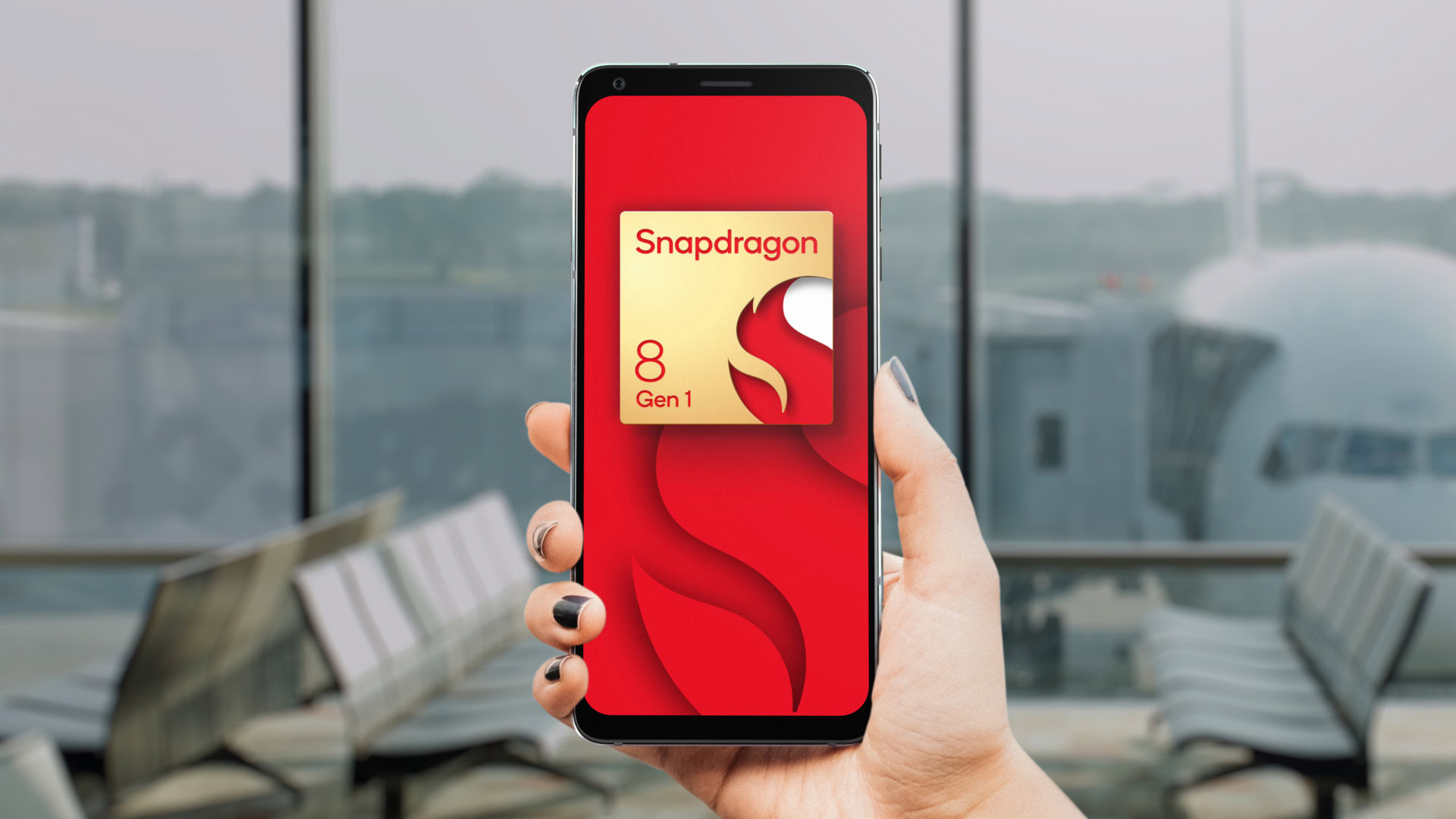
2022’s top-end Snapdragon flagship processor was the Snapdragon 8 Gen 1, being announced in December 2021 and powering a host of high-end phones. This is a rather notable release for Qualcomm as we’ve got a new naming convention in place. Gone is the Snapdragon 8xx naming in favor of a single digit and the “Gen x” suffix.
The chip is built on Samsung’s 4nm process, while also dishing out a new Snapdragon X65 5G modem, sporting 10Gbps downlink speeds and 3GPP Release 16 features.
Otherwise, the Snapdragon 8 Gen 1 is also the first Snapdragon processor with new Arm CPUs based on the ArmV9 architecture. There’s a Cortex-X2 core at 3GHz, three Cortex-A710 CPU cores, and four Cortex-A510 cores. The latter is particularly notable, as it’s the first time since the Snapdragon 845 that we’re seeing new efficiency/lightweight cores.
| Snapdragon 8 Gen 1 | Snapdragon 8 Plus Gen 1 | |
|---|---|---|
CPU | Snapdragon 8 Gen 1 1x Cortex-X2 @ 3GHz 3x Cortex-A710 @ 2.5GHz 4x Cortex-A510 @ 1.8GHz | Snapdragon 8 Plus Gen 1 1x Cortex-X2 @ 3.2GHz 3x Cortex-A710 @ 2.75GHz 4x Cortex-A510 @ 2GHz |
GPU | Snapdragon 8 Gen 1 Adreno 730 | Snapdragon 8 Plus Gen 1 Adreno 730 |
Modem | Snapdragon 8 Gen 1 X65 5G & RF system 10Gbps down 3000 Mbps up (integrated) | Snapdragon 8 Plus Gen 1 X65 5G & RF system 10Gbps down 3000 Mbps up (integrated) |
Cameras | Snapdragon 8 Gen 1 200MP single snapshot / 108MP single with multi-frame noise reduction / 36MP triple / 64MP+36MP dual | Snapdragon 8 Plus Gen 1 200MP single snapshot / 108MP single with multi-frame noise reduction / 36MP triple / 64MP+36MP dual |
Quick Charge | Snapdragon 8 Gen 1 5 | Snapdragon 8 Plus Gen 1 5 |
Bluetooth | Snapdragon 8 Gen 1 5.2 | Snapdragon 8 Plus Gen 1 5.2 |
Process | Snapdragon 8 Gen 1 4nm Samsung | Snapdragon 8 Plus Gen 1 4nm TSMC |
Qualcomm’s Adreno GPU is also getting an upgrade. The firm says you can expect the new Adreno 730 to offer 30% faster graphical rendering and a 25% efficiency improvement over the Snapdragon 888. Other GPU-related upgrades include improved variable-rate shading, Unreal Engine 5 support, and volumetric rendering.
We also get camera-related upgrades here. The new chipset still offers 200MP single camera support but now offers 36MP triple camera support, 64MP+36MP dual camera capabilities, and better multi-frame processing and burst shots. We also have video-related additions, such as 8K HDR recording, a 4K bokeh engine, and video super-resolution. It certainly makes for a cutting-edge camera platform.
Related: Samsung Galaxy S22 benchmarked — Snapdragon 8 Gen 1 versus Exynos 2200
Other noteworthy features here include always-on face detection (which can theoretically be used to fire up face unlock sensors or to fight screen peeking), Bluetooth 5.3, Quick Charge 5, Wi-Fi 6E, and a claimed four-fold increase in machine learning performance.
There are a few features missing from the chipset compared to arch-rival MediaTek’s Dimensity 9000 though, such as AV1 decoding again and presumably 5G+5G dual-SIM.
The company went on to launch the Snapdragon 8 Plus Gen 1 in May 2022, and it might be the most dramatic mid-year upgrade ever. Qualcomm switched from Samsung to TSMC for manufacturing, claiming a 30% efficiency gain and 10% CPU clock speed improvements across the board as a result. The refreshed chipset also gains a 10% GPU clock speed boost and an apparent 20% boost to performance-per-watt. The performance and efficiency improvements indeed bore out for the most part in our own testing.
Notable phones: Samsung Galaxy S22 series, OnePlus 10 Pro, OPPO Find X5 Pro, vivo X80 Pro, Xiaomi 12 Pro, ASUS ROG Phone 6
Did you know: Qualcomm has also switched to the new “Gen 1” naming convention for its mid-range silicon. Yes, the Snapdragon 7 Gen 1 was announced in May 2022.
Snapdragon 8 Gen 2: A huge step up
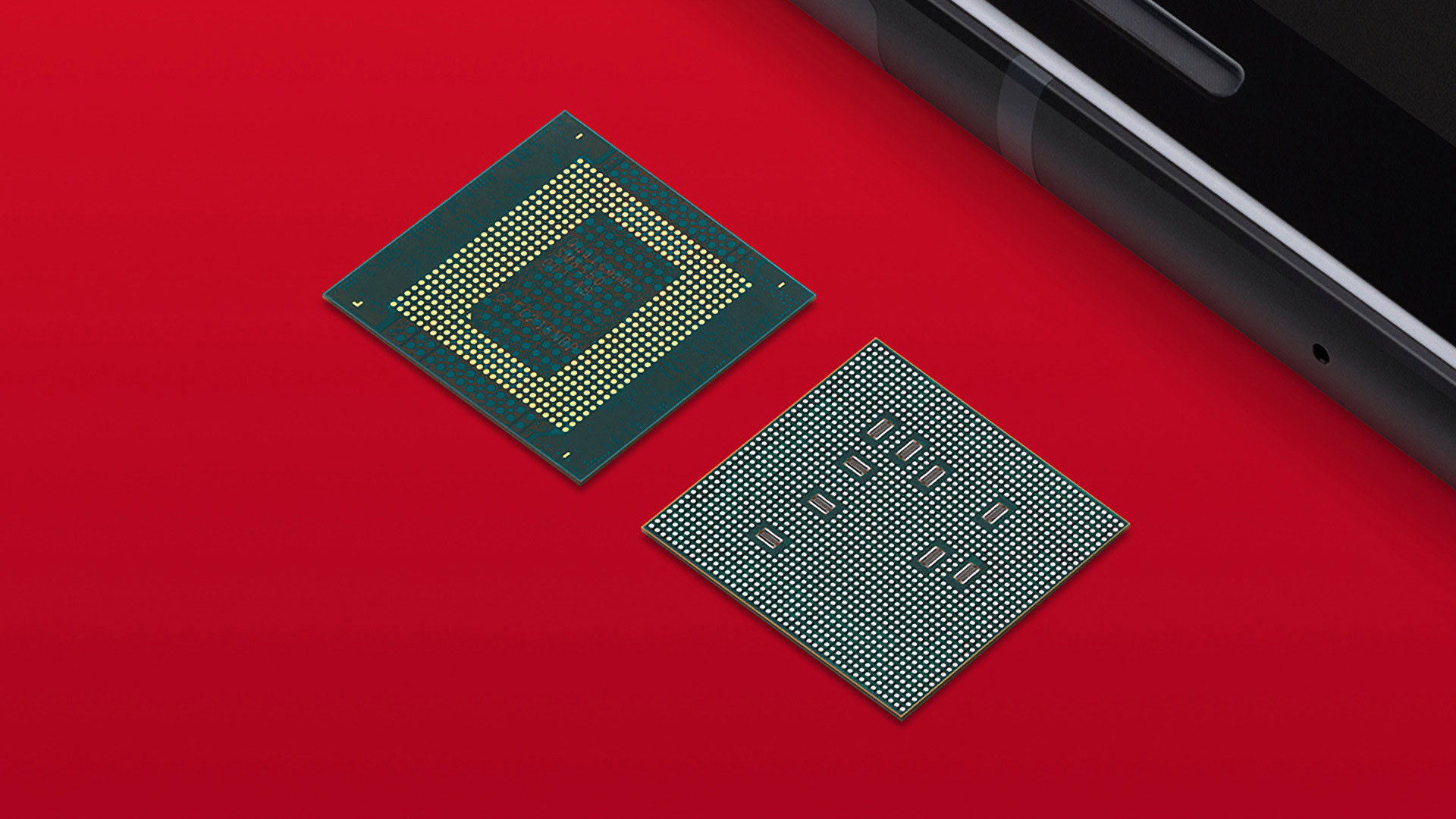
Qualcomm’s flagship chipset of choice for 2023 is the Snapdragon 8 Gen 2, announced in November 2022 and already available inside several smartphones. It continues the new naming convention and brings a host of interesting upgrades to the table.
For starters, Qualcomm has switched from a 1+3+4 CPU layout to a 1+4+3 setup. That is, you’ve got one heavyweight CPU core (Cortex-X3), four medium cores (two Cortex-A710 and two Cortex-A715), and three little cores for power efficiency (Cortex-A510). This should result in better multi-core CPU performance on paper, but it’s unclear whether battery life will suffer as a result.
The Snapdragon 8 Gen 2 also brings a major GPU upgrade as this is the first Snapdragon chipset with hardware-accelerated ray tracing support. Ray tracing is a graphical technique allowing for more realistic lighting, shadows, and reflections. So expect mobile games with this tech to have some great lighting effects in theory.
In any event, Qualcomm is touting a 35% performance improvement and 40% efficiency improvement over the CPU in the vanilla Snapdragon 8 Gen 1. The firm is also claiming a 35% performance uplift and 45% efficiency savings over the Snapdragon 8 Gen 1’s GPU.
| Snapdragon 8 Gen 2 | |
|---|---|
CPU | 1x Cortex-X3 @ 3.19GHz 2x Cortex-A710 @ 2.8GHz 2x Cortex-A715 @ 2.8GHz 4x Cortex-A510 @ 2GHz |
GPU | Adreno 740 |
Modem | X70 5G & RF system 10Gbps down 3,500 Mbps up (integrated) |
Cameras | 200MP single snapshot / 108MP single with zero shutter lag / 36MP triple / 64MP+36MP dual |
Quick Charge | 5 |
Bluetooth | 5.3 |
Process | 4nm TSMC |
The 2023 chipset also comes with AI-related improvements. For one, the DSP now has its own power supply enabling a 60% improvement in performance-per-watt in some scenarios. The Tensor Accelerator also sees a two-fold increase in performance.
We don’t see much in the way of camera-related improvements at first glance, but perhaps the most notable change here is the addition of the Hexagon Direct Link. This effectively connects the AI silicon to the ISP, speeding things up as a result. This tightly coupled pipeline enables faster processing of RAW data and more advanced machine learning.
More reading: Forget more megapixels, your next phone’s camera could offer whiter teeth
In fact, one feature Qualcomm is touting as a result is so-called real-time semantic segmentation, with Snapdragon 8 Gen 2-powered phones able to identify hair, teeth, fabric, and more. This opens the door for more granular beautification effects and more advanced image processing.
Other notable features include Bluetooth 5.3, Wi-Fi 7, the Snapdragon X70 modem, satellite connectivity, and aptX Lossless capabilities. We’ve also finally got AV1 decoding support, coming a while after rivals offered this feature. The AV1 codec allows for smaller video file sizes at the same quality or better quality for the same file size. Netflix and YouTube already offer AV1 content, so Snapdragon phones can now take advantage of this.
Notable phones: OnePlus 11, REDMAGIC 8 Pro, vivo X90 Pro Plus, Xiaomi 13 series
Did you know: The Snapdragon 8 Gen 2 is rumored to be available in an overclocked version for the Galaxy S23 series. The Samsung-exclusive processor is tipped to clock in at 3.36GHz instead of 3.19GHz.
That’s about it for our look at Qualcomm Snapdragon history for the 800 series. Did we miss anything? What do you want to see from next-generation silicon? Sound off in the comments below!